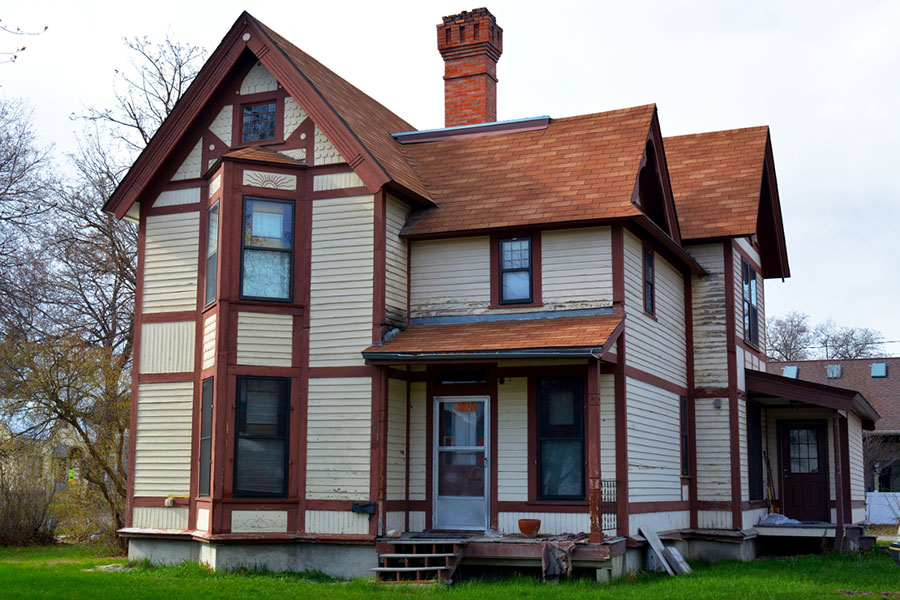Simply put, it’s impossible to speak of the history of Kalispell without mentioning Reverend George McVey Fisher, the pioneer Presbyterian minister, self-proclaimed “Sky Pilot,” and namesake of this house.
Fisher arrived in the Flathead Valley in 1886 to give a sermon at the Ashley schoolhouse (where he sneaked in and stayed to keep warm). In 1887, captivated by the awe and promise of the valley, Fisher and his wife took up a 160-acre homestead — upon which much of the town of Kalispell now sits.
Aside from preaching, Fisher took up farming. The frocked elders of the church, however, frowned upon farming. And despite Fisher’s work to establish the first congregation in these parts, and other community work, the church withheld money and aid from Fisher. He was between a rock and a hard place.
Although perhaps by providence (or at least divine intervention or irony), the initial plans of the Great Northern Railway for Kalispell went bust. Railroad officials soon offered to buy the Fisher homestead. Fisher agreed, and with the handsome profit, he escaped the financial burden imposed by the church. And in May 1891, he bought the land for this house from the “Kalispel Townsite Company” (which bought his homestead and provided him with funds in the first place).
The house was built during the following summer in 1892. Hence it is one of the earliest homes in Kalispell. And it became a place of Fisher’s ideals, and ultimately his legacy. For example, Fisher gave food and shelter to the Pend O’reille and Kootenai at his home, when many white settlers feared Indians. He also employed a Chinese cook, perhaps in protest of the Chinese Exclusion Act.
As Fisher declared in his memoirs (written at the house): “I have been a tiller of the soil, a producer of food, clothing, and shelter … And through all these fifty years of Sky Piloting, I have worked unceasingly to make life better and happier for men and women of all creeds, races, and nationalities — the melting pot of humanity we call America.”
In his words and deeds, Fisher proved how keeping your head in the books, and your hands in the soil, can yield much good. Fisher passed away in 1934, and his wife passed away in 1937, but not before they raised their six children at the home (and founded six congregations as well).
In 1941, their daughter Mary and her husband James Heller moved into the home. Mary kept the home through the 1980s, when more than a few renovations were done (unfortunately, some were not for the benefit of historic preservation). Yet the house remains architecturally important. It is a rare example of the Stick style, the hallmarks of which can be seen around the house today.
For example, there’s the mix of plain clapboard with decorative siding, and mock, half-timbered framing (like the Tudor-Revival style decades later). There are also the many angles and diagonals about the roof line and gables, perhaps most dramatic along the south-facing bay window. Other stylistic features such as the original wrap-around porch, fanciful spindle-work, and the original barn, corral, and laundry house are long gone.
Nonetheless, the Fisher/Heller House remains significant. It was a place of gathering and celebration for family and friends, and new faces just the same. It was a place of welcome for the weary (no matter their tribulation). And it was a place where a family acted upon their beliefs.
It was everything a home should be.
Jaix Chaix is a columnist and author of Flathead Valley Landmarks and other local history books that are available for sale at the Flathead Beacon at 17 Main St. in Kalispell.
